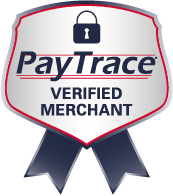The economy may be recovering, but many businesses remain leery of misstepping and falling back into financial tumult. America’s business world is coming off a confidence-rattling economic recession that showed many organizations just how volatile their good financial standing can be. This is especially true for small businesses, which already face small margins for error.
Downturns such as the recent financial crisis remind us that, even in apparently good economic times, frugality and efficient spending are always good habits. Companies looking to install or expand inbound marketing practices within their company might be leery about the up-front investment and whether or not that will produce financial gains. But one of inbound’s greatest advantages is the ability to implement it on a small scale, and with a limited budget. Even small organizations strapped for cash can find ways to leverage inbound for big results. Here are four tips to help you get the greatest marketing bang for your buck.
1. Do your research before you spend money
First off, you’ll want to get a sense of where you can go online to find your target audience. While the goal of inbound marketing is to bring those consumers directly to your website, it’s not possible to market across the entire World Wide Web. You’ll need to concentrate on certain areas and websites, and a little market research can be invaluable in that sense.
Once you’ve nailed down your target audience, you can use your newfound knowledge to develop an effective targeting strategy, especially as it relates to keywords. Keywords are what will drive traffic to specific pages and blog posts on your website, and keywords will also be used if and when you invest in a pay-per-click advertising strategy. PPC ads can make you a lot of money through increased traffic and conversions, but you can also lose a lot needlessly if you aren’t targeting consumers correctly. This is why research is so essential.
2. Develop low-cost campaign channels
Some inbound marketing is more expensive than others. A website is essential, and publishing new content is very important in today’s world of SEO. To some extent, the costs of your most essential campaigns will be fixed. But other channels offer great value at little to no cost.
When you’re looking for cost-effective inbound marketing, social media is your best bet. Major networks like Facebook, Twitter and Pinterest are free for business users, and they can create residual value by allowing you to collect and grow a body of social followers — all of which may be current or prospective customers. You can promote your original content through those channels to squeeze extra value out of your website, and partnerships forged through those networks can help you reach new clientele.
3. Start spending slowly, then increase as the results come in
When you start putting money into these inbound channels, it’s important not to go hog-wild until you get some confirmation of results in return. Some strategies take longer to develop than others — it will be months, for example, before your original content produces significant upswings in traffic, and most social media strategy requires a minimum of six months to set roots and really take hold. But others, such as banner advertisements, should start producing referrals right away.
You’ll want to get a decent sample size before you make any rash decisions — for example, five referrals that don’t produce sales won’t be representative of your overall conversion rate — but take a cautious, balanced approach toward inbound spending until you get enough information to make a decision either way.
4. Divert resources toward campaigns delivering the highest returns
Over time, some campaigns will prove to be successful, while others won’t earn back the money you spend. And among your successes, some will be far more productive than others. It’s important to remember that your inbound strategy is never set in stone — because your resources are limited, you can’t afford to keep pouring your time and money into sub-par channels. As data comes in and you analyze the results, make continual tweaks and changes to maximize your potential return-on-investment. Never put all of your eggs into one basket, but give the greatest weight — and financial support — to the campaigns offering the greatest rewards.
Remember: Inbound can always be scaled to meet your budget and your company’s needs. DBC Digital brings years of experience and innovation to its work in marketing Denver businesses in the digital age. If you’re looking to take advantage of this digital marketing opportunity, contact us today at 303-357-5757 or dbc@dbcdigital.com.


